Queen Elizabeth II's Most Notable Accomplishments
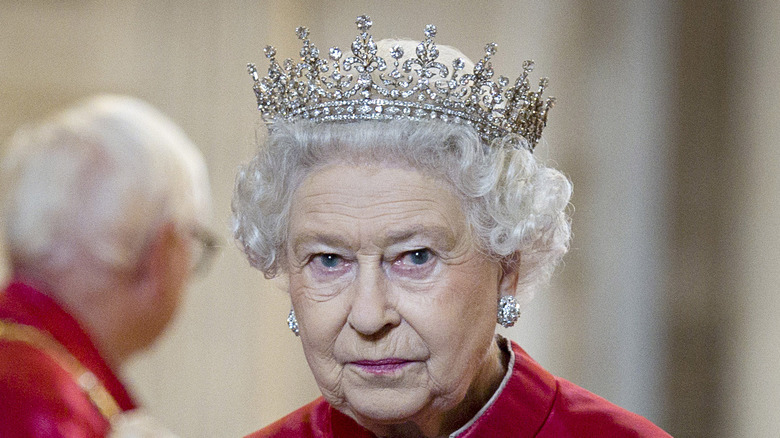
Correction 09/09/22: A previous version of this article stated that Queen Elizabeth was 19 when she joined the military. She was 18, not 19.
Before her death on September 8, 2022, Queen Elizabeth II (officially Elizabeth II, by the Grace of God, of the United Kingdom of Great Britain and Northern Ireland and of her other realms and territories Queen, Head of the Commonwealth, Defender of the Faith, per Britannica) was the epitome of what's called "soft power." The position she inherited in 1952 was already extremely reduced in terms of actual power and authority, and during her reign, the crown underwent a transformation into a figurehead position. Put simply, Elizabeth simply didn't have much power.
That doesn't mean she wasn't important. First of all, she performed a necessary legal function simply by existing — the crown must sanction all legislation passed by Parliament in the United Kingdom. If that sanction has become ritualistic and automatic, the fact remains that the Queen could, in theory, have refused to approve something. And she was still Head of State even if she was not Head of Government, and the crown is the source of legal authority in the U.K.
But Queen Elizabeth's lack of hard power also doesn't mean she had no accomplishments to point to. Although most of those achievements were behind the scenes and a little more subtle than the treaties, executive orders, and directives presidents and prime ministers can deal out, they're still pretty significant. In fact, since Queen Elizabeth managed all this without direct authority, they're possibly even more impressive. Here are Queen Elizabeth II's most notable accomplishments.
Her service in World War II
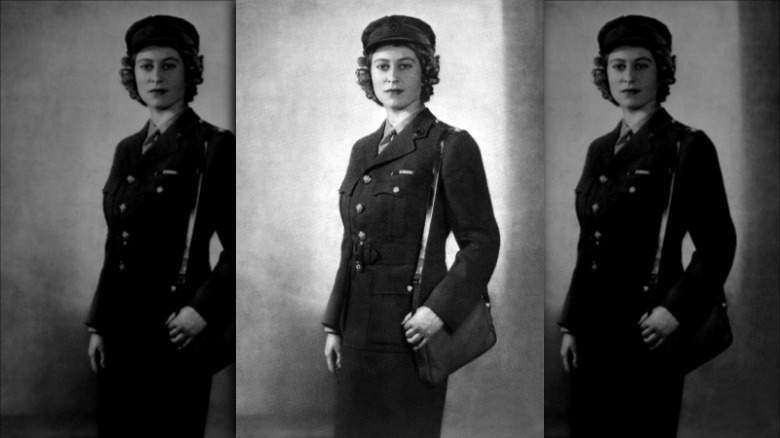
When World War II broke out in 1939, Princess Elizabeth was only 13 years old. As noted by The National World War II Museum, when Buckingham Palace was bombed during the Blitz in 1940, her father King George VI and his wife, Elizabeth, remained there in solidarity with the rest of the population, but the princesses Elizabeth and Margaret were evacuated to Windsor Castle, 20 miles away.
As the war dragged on, Elizabeth felt a keen sense of duty. According to Biography, she wanted to enlist as soon as she came of age in 1944, but the royal family couldn't allow the heir to the throne to be put in danger. But Elizabeth refused to take no for an answer and kept pushing. In 1945, when she was 18, Elizabeth was given permission to join the military effort. She joined the Women's Auxiliary Territory Service (ATS), and trained for six weeks as an auto mechanic.
Time notes that this wasn't a combat role, but that doesn't mean it didn't come with risks — at least 335 members of the ATS were killed during the war. The young princess' dedication to her country and her willingness to serve just like anyone else (well, almost; she did get to go home to Windsor Castle every night to sleep) made her extremely popular and sparked a lifelong love of cars and mechanical work.
The stability she brought
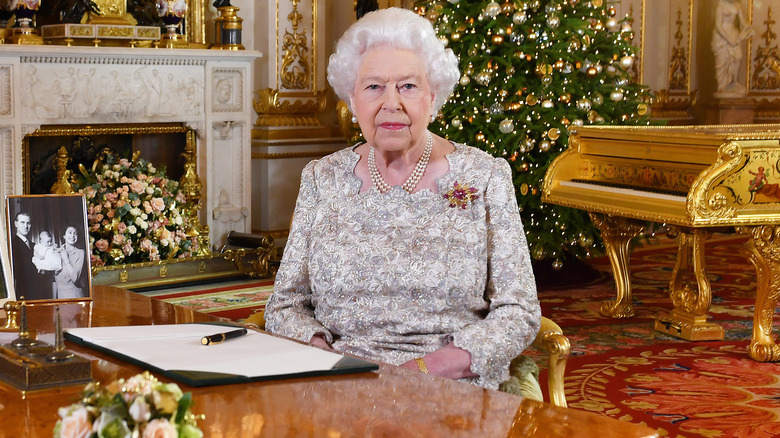
It might not seem like a big deal, but one of Queen Elizabeth's greatest achievements was simply being a stable, predictable monarch. Prior to her ascension, there had been a period of uncertainty. As reported by CBS News, her uncle King Edward VIII abdicated when she was just 10 years old, throwing the crown into disarray. Her father stepped in as King George VI, but Vanity Fair notes he did so very reluctantly, dreading the spotlight and feeling unprepared.
While George VI solved the immediate crisis of confidence by taking the crown, his kingdom was quickly sucked into World War II. London was bombed, and according to Britannica, there were real fears that the island might be invaded by Germany. Then, just as the country was rebounding from the war, King George VI died at a relatively young age, leaving 25-year-old Elizabeth to take the crown.
As noted by Forbes, Elizabeth provided exactly what was necessary in this post-war period: stability. Her steady, calm approach to her new role gave the nation exactly what was needed as it emerged from a particularly chaotic period, and remained exactly what the country needed as a series of new crises descended on it, including economic woes and a shrinking role on the world stage. With the necessity of the royal family always in question, according to The Independent, the stability brought by Elizabeth can be seen as crucial.
She guided the transformation to a commonwealth

By the time Elizabeth ascended to the throne in 1952, the British Empire was already in rapid decline. As explained by The Imperial War Museums, prior to World War II, Britain had maintained a vast empire of colonial holdings and a reputation as a world power. As noted by Politico, at its height, the British Empire held 57 colonies or other territories comprising about a quarter of the land mass of the world. But after teetering on the verge of total defeat and emerging into a new world dominated by the United States, Britain found its empire too expensive and difficult.
A rapid list of former colonies began breaking away and declaring themselves independent states, beginning with India in 1947. Although the process of establishing what's known as the Commonwealth began in the late 19th century, according to Britannica, it fell to Queen Elizabeth II to guide the country through a rapid acceleration of the process. When she was crowned, the Commonwealth had eight member states. Today there are 54. That means that Queen Elizabeth oversaw a process in which practically the entire British Empire transformed into a voluntary association of sovereign nations. Her own authority became largely ceremonial, and the British "empire" is down to just a few islands scattered around the globe. But where other empires have gone down in literal flames, Elizabeth largely guided hers to a peaceful, orderly end.
She modernized the monarchy
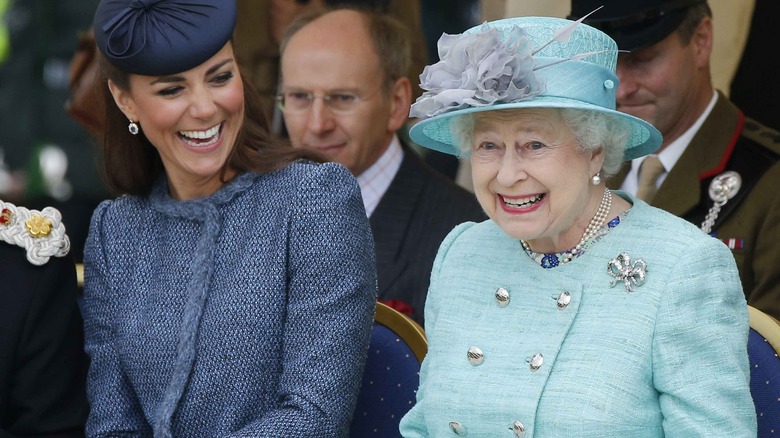
The kingdom of England dates back thousands of years, and Elizabeth was one in a line of monarchs that dates back to 1066, when William the Conqueror invaded the island. As noted in Vanity Fair, when her father, King George VI, took the throne after her uncle's abdication, there was no certainty that the monarchy would survive. In the early years of the 20th century, it seemed like the British monarchy would be swept away like so many others. While King George VI provided a period of stability that forestalled any thought of abolishing the monarchy, Queen Elizabeth was the one who truly saved it.
Her secret? Britannica explains that she stabilized the royal family's position with her willingness to modernize and embrace change. Realizing that her subjects needed to see the royal family as approachable, she appeared on television regularly and spoke directly to the people. She also embraced new technology — as noted by Forbes, she sent out the first royal tweet in 2014, and History reports that she was the first monarch to record her annual Christmas message on film. Today, you can watch it on YouTube. She also adjusted her approach to marriage and divorce, accepting the fact that the latter became much more common and acceptable in the modern world and approving several divorces among the royal family.
She made the succession more equitable

Although it's true that the queen didn't introduce or vote on legislation and is expected to be very politically neutral, her influence was undeniable. Not only did she have to confer her ceremonial approval of all new laws, but she also represented a continuous line of experience stretching back to the 1950s. Her first mentor was Sir Winston Churchill, after all. So when the Crown Act of 2013 was passed, Reader's Digest notes it was with Elizabeth's "cooperation" because the legislation might have failed were it not for her influence.
That's a significant achievement, as it ended centuries of English history of the eldest son of a monarch being heir to the throne even if he had an older sister (per Time). As noted by BBC News, It also allowed the monarch to marry a (gasp) Roman Catholic if they absolutely must — though the monarch is still not allowed to actually be a Roman Catholic.
While it can be argued that the queen had a very personal interest in seeing the rule change, as she proved over the course of 70 years that a woman could be a very effective monarch, she had also been a staunch defender of tradition. But Queen Elizabeth II never shied away from modernizing the monarchy when the opportunity arose, and this shift was a great step forward for gender equality.
She was the first British monarch to address congress
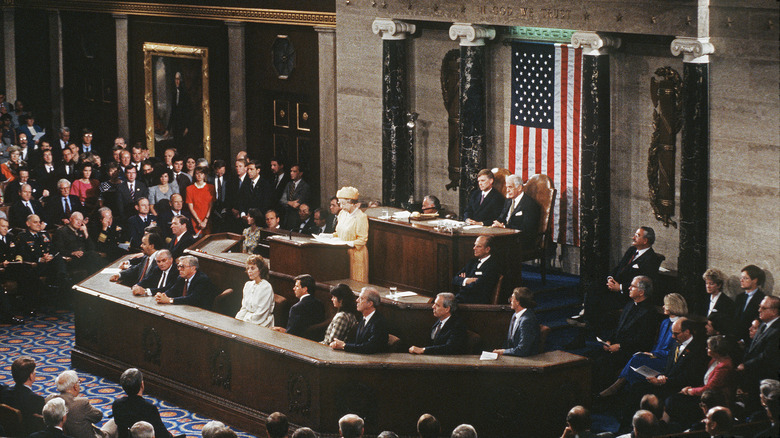
Considering the close history of the U.S. and U.K., it's perhaps surprising how deeply divided they have been. The United States of America started off as a group of British colonies, of course, and Americans were once subjects of the King of England.
And yet one of Queen Elizabeth II's greatest achievements came in 1991, more than two centuries after the U.S. won independence from the British Empire. As reported by the Los Angeles Times, that year she became the first British monarch to address a joint session of the United States' Congress. As noted by The New York Times, her speech was a huge success — from a joke about her height to the three standing ovations she received, she obviously charmed the American politicians.
As noted by the Sun Sentinel, her speech was significant not only because she was the first King or Queen of the United Kingdom to address congress, but because she used it to underscore the "special relationship" between the U.S. and the U.K. The two countries share a language and a great deal of history and culture, and the Queen's speech centered on continuing cooperation and a unity of interests.
Her visit to the Republic of Ireland in 2011
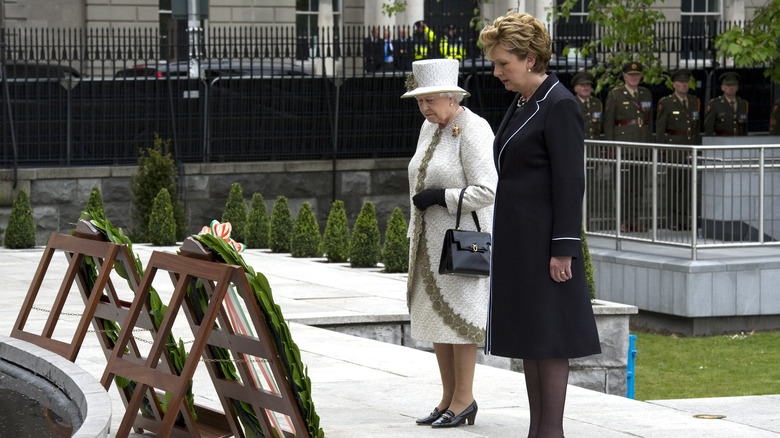
The United Kingdom has a violent history with many of its former dominions — that tends to happen when empires try to prevent people from ruling themselves. But few conflicts have been as bitter and bloody as the one between the U.K. and the Republic of Ireland. Dominated by the English for centuries, Ireland fractured into two states when nationalist party Sinn Féin declared a new Irish Republic, as explained by Britannica. Relations between the new Republic of Ireland and its former imperial masters were marked by violence for decades.
Which made Queen Elizabeth II's state visit to Ireland in 2011 an incredible achievement. She was the first monarch to make an official visit to the island since its independence. As noted by Yahoo! News, her somber appearance at the Garden of Remembrance in Dublin was a sensation in Ireland. She placed a wreath at the monument to those who died fighting the U.K. for Irish freedom and bowed her head respectfully. Many Irish took this as a subtle signal that the Queen acknowledged her own country's misdeeds.
According to The Guardian, the trip and the gesture made Queen Elizabeth II incredibly popular in a country that typically despised the monarchy as a former oppressor. The trip was an incredible achievement, especially considering that the queen had no true political power and somehow reset relations between the two countries simply by showing respect.
The 1969 television documentary
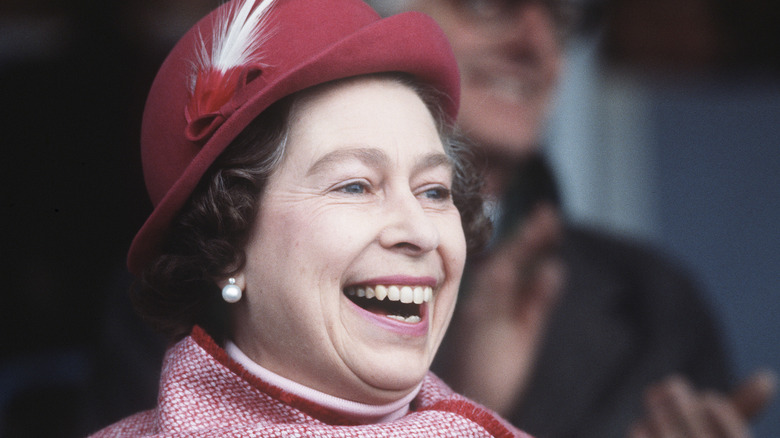
According to Town and Country, in 1968, Queen Elizabeth II made the remarkable decision to allow a documentary film crew to follow her and her family around for more than two months. The filmmakers had unprecedented access to the private family life of the queen, and produced an infamous two-hour documentary called "The Royal Family." History notes that the film aired in England on June 21, 1969.
The documentary was part of an effort to humanize the royal family and change their stuffy image, and it was in many ways an incredible success. More than 30 million people watched the film, and it showed the royals as a family for the first time — human beings who joked, played, and ate dinner together. Many people saw the royals in a new light. But according to CNN, the queen soon regretted her decision and banned the documentary from future broadcasts. In fact, when the film leaked to YouTube in 2021, she moved quickly to have it taken down.
Some argue that the film removed the sense of awe and glamor from the royal family, leading to an era of invasive tabloid coverage. Once people started thinking of the royals as regular people, they became mere celebrities subject to gossip — and criticism. But it remains a remarkable achievement in the argument that the royal family deserves their position and is ultimately a force of good for the U.K.
Her tireless charity work
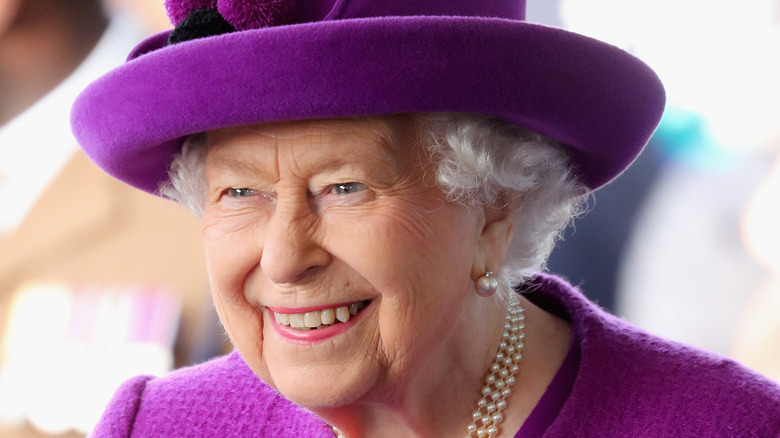
One of Queen Elizabeth's greatest achievements was a cumulative one: the sheer amount of effort she put into supporting various charities. The Guardian puts it very plainly, arguing that she did more for charity than any other monarch in history.
In fact, Queen Elizabeth was credited with being one of the greatest supporters of charity work in the world. According to Borgen Magazine, she supported more than 600 charities in Britain (the royal family as a whole officially supports nearly 3,000 charities around the world). The queen was responsible at least in part for raising an eye-popping £1.4 billion (close to $2 billion). The queen made it a special focus of her life to help reduce poverty. Acting as a royal patron to charities helps focus public attention, and allows the monarch and her family members to host fundraisers. In fact, Queen Elizabeth was careful to pass her patronage on to other family members to ensure that these charities always have the backing of the monarchy.
The queen's impact was felt most powerfully in causes that support communities and that promote education. These are aspects of life that can provide the support and skills needed to help people rise out of poverty.
She reformed the monarchy's finances

As noted by The Guardian, the utility and necessity of the royal family has been hotly debated for years. One of the main reasons some want to do away with the monarchy is the fact that it's expensive. According to BBC News, the government of the United Kingdom pays the royal family about £86 million every year for its upkeep and expenses.
Many people believe the one thing that kept the royal family's popularity up was the queen herself. Elizabeth II's personal popularity far exceeded the overall support the royal receives in the U.K. One reason for her popularity was how she adapts to the will of the people. One of her great achievements was the quiet way she reformed the monarchy's finances in order to deal with criticism. For example, after a traditional waiver was lifted in the 1990s, she moved quickly to pay taxes on royal income that had been exempt for years, according to Town and Country Magazine. And British Heritage notes that by getting rid of expensive things like the royal yacht, she was able to reduce the cost of the royal family by several million pounds annually.
Forbes reports that when the palace budget was hit with a $44 million shortfall, the queen determined not to request any additional public funds. Considering that she was personally worth more than $500 million, this was a savvy decision that blunted criticism of royal expenses.
Supporting racial justice in the Commonwealth
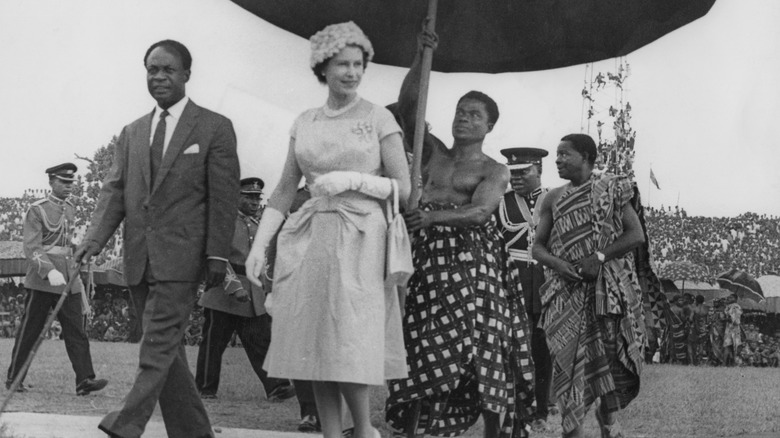
The royal family is not often cited as being particularly "woke." They are, after all, privileged as a whole — not just rich but royal. But one of the great and often overlooked achievements of the queen was the quiet work she did over the years to support racial equality and advancement in the world.
As noted by The New York Times, Queen Elizabeth's work began in her early years. In 1961, she danced with the president of Ghana, Kwame Nkrumah, a Black man. This outraged many racists both in her own kingdom and the larger Commonwealth, but the queen was resolute in her support of equality. And she worked behind the scenes to get the Commonwealth to condemn South Africa's apartheid system, only to be stymied by her own prime minister, Margaret Thatcher, who opposed the statement for reasons both personal and political.
According to The Washington Post, the queen also supported the Black Lives Matter movement. While the royal family as a whole has been accused of holding racist attitudes — including by Prince Harry and the Duchess of Sussex, as reported by CNBC — some have noted that these criticisms often seem not to include the queen herself.
She was the longest-serving monarch in English history
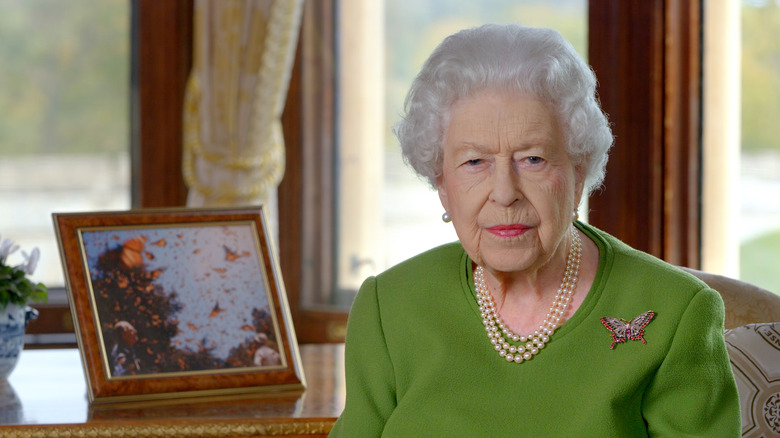
One of Elizabeth II's achievements is likely to never be surpassed. According to BBC News, when she died on September 8, 2022, she was the longest-serving English monarch in history, having hit 70 years on the throne earlier that year.
Not only did Elizabeth's long reign translate to tremendous stability for the United Kingdom and a sense of affection from her subjects (most of whom had never known a different sovereign), but as noted by Tatler, this made Elizabeth II the second-longest reigning monarch in world history. Had the Queen lived until May 2024, she would have surpassed King Louis XIV — a.k.a. the Sun King — as the longest-reigning monarch ever. With her passing, he keeps the top spot with his current record of 72 years and 110 days on the throne.
However, King Louis XIV had a slightly unfair advantage considering he ascended to his throne when he was just 4 years old, according to Britannica — he was 76 when he died, and spent much of his early reign as a neglected child and an impoverished king whose crown was under assault by rebellious nobles. In contrast, Queen Elizabeth took the crown when she was 25 and was been firmly in control of her reign from then on.












